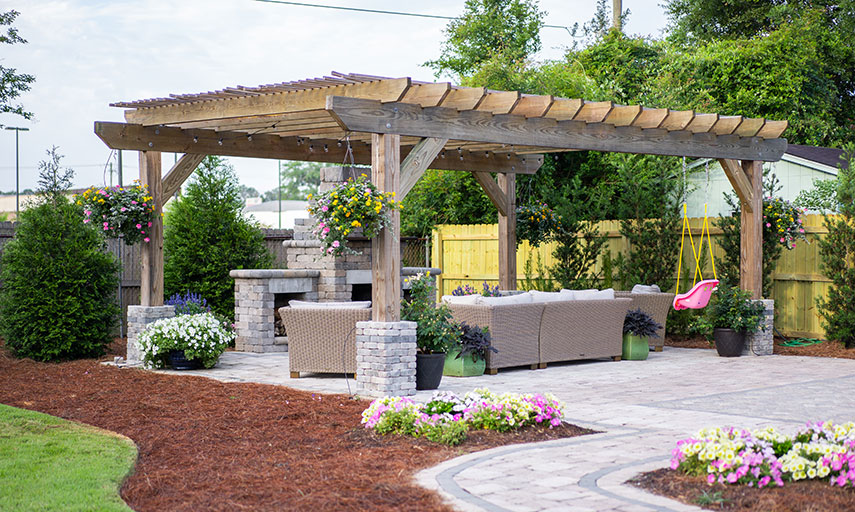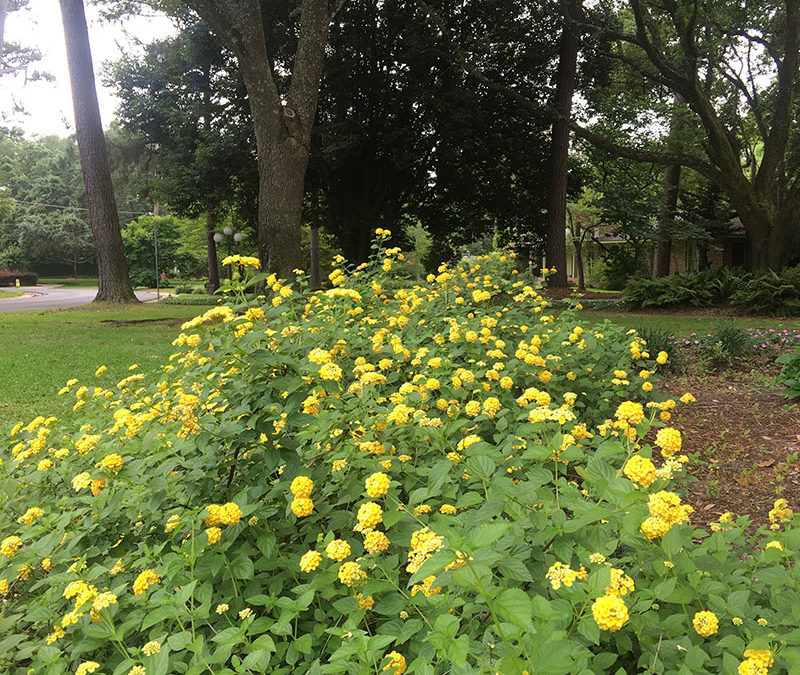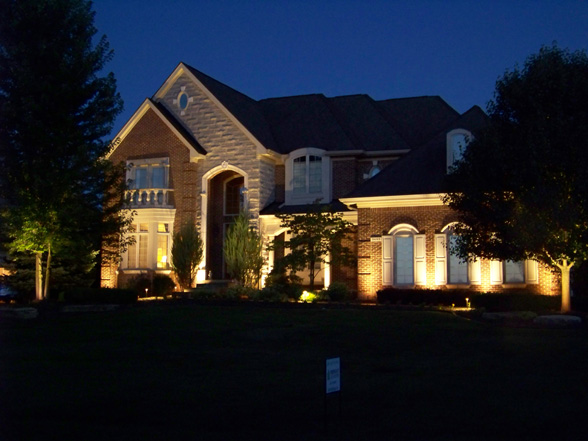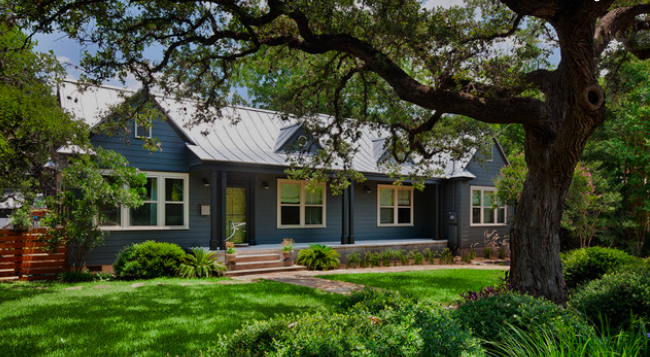
Pine Straw Vs. Mulch
April 21, 2021
5 Ways to Protect Your Landscape From Dogs
May 12, 2021Installing a new landscape is a lot like renovating your home – and it can feel just as overwhelming. Landscape installation is a multi-step process that involves designing, constructing, and maintaining your new outdoor space. It’s much more complex than simply planting some new blooms!
The good news is, it’s completely doable with the help of the right landscape team. Plus, the result is a beautiful and functional space that provides years of exceptional outdoor living (and a big boost to your property values.)
Best of all, this basic guide can prepare you for every step from planning to the final product. Whether you’re ready to break ground or are still in the dreaming phase, our introduction to landscape installation can put you on the right path to achieving your outdoor vision.
PLANNING AND DESIGN
A beautiful and functional landscape begins with a solid plan in place. Your new landscape should match your outdoor vision, but it should also complement your home, work with your property conditions, and fit your family’s needs.
Your landscape designer will help you consider these factors in a preliminary walkthrough of your property. During this time, you will discuss your ideas, analyze your property characteristics, and go over your project budget, scope, and timelines.
Once you’re on the same page, your landscape designer will render a design of your landscape for your review and approval.
LANDSCAPE CONSTRUCTION
Once you’ve agreed to your design, it’s time to begin construction. A professional landscape company like Chad’s Landscape Management will guide you through each step and keep you informed throughout the entire process.
Your installation crew may construct one or all of the following landscape elements:
PLANTINGS
A beautiful array of blooms, trees, and shrubs is the hallmark of a great landscape. However, it’s not as easy as choosing any plant you like. While your plants should match your personal style, it’s even more important that they thrive in your new outdoor space.
That means choosing plants that are suited to your landscape’s geographic location, degree of sun and shade, and soil conditions. You should also consider how much time you want to devote to maintenance, as some plants require more long-term care than others.
If it feels overwhelming, don’t worry – your landscape designer can help you select the perfect plants to bring your landscape lasting beauty.
HARDSCAPES
A hardscape is all of the non-living elements of your landscape design. If it’s not a living plant, it’s probably a hardscape. When thoughtfully designed, hardscapes bring balance, functionality, and organization to your outdoor space.
Unlike plants, your hardscape design is only limited by your available space, budget, and vision. They come in a large range of sizes, shapes, and materials, from simple gravel pathways to ornate brick patios to full outdoor kitchens and more.
Some common hardscape elements include:
- Patios and Pergolas
- Decks
- Paths and Walkways
- Walls
- Outdoor Kitchens
- Outdoor Fireplaces
- Water Features
LANDSCAPE LIGHTING
There are many forms of landscape lightning that go far beyond the traditional backyard floodlights. You can add outdoor lighting to your patio for evening entertaining or illuminate your pool for a late night swim. Lights along your walkways allow for safe twilight strolls, while security lightning keeps intruders at bay. You can even add lighting to flower beds to draw attention to your favorite foliage.
DRAINAGE
Drainage isn’t the most fun aspect of landscape installation, but it is one of the most important. If your property doesn’t drain properly, you could face serious problems like standing water, soil erosion, and even water damage to your home.
Luckily, a professional landscaper has a full arsenal of drainage solutions to improve your landscape. These include grading your property for better water runoff, installing trench or French drains, creating a dry creek, and more.
IRRIGATION
An irrigation system makes sure the time you spent choosing the perfect landscape plants doesn’t go to waste by keeping them hydrated and healthy. It also saves you the time and hassle of watering by hand.
There are two basic types of irrigation. Sprinklers deliver water from overhead and are often programmed to cycle automatically. Drip irrigation allows water to drip slowly to the plants’ roots, conserving water and minimizing evaporation. The two types can be used separately or blended together to form one overarching system.
There are many steps in the landscape installation process, but the reward is more than worth the work. If you still have questions, request our comprehensive guide to landscape planning for even more helpful information. You can also contact Chad’s Landscape Management to put our professional landscape team to work for you!





